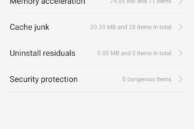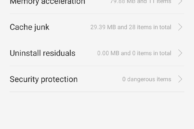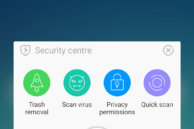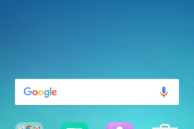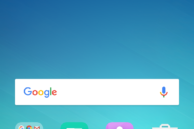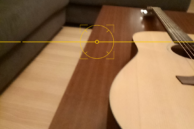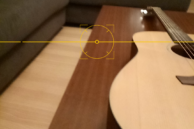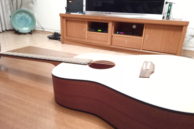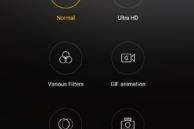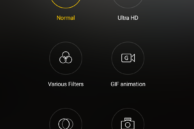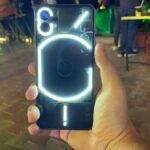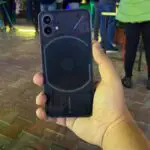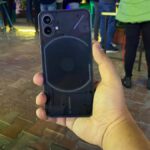
The Oppo R9, also called the F1 Plus in some markets, is touted as Oppo’s flagship device for the very Dorian Gray public of today – narcissistic and selfie obsessed. Unlike Dorian Gray, however, they need not have to sit through an arduous painting, but can have their image immortalised for eternity within seconds with the higher resolution front camera. Whether this image does justice to their beauty, or not, can be discovered later in this review.
As to the reason behind the dual naming based on different markets, Oppo’s explanation is that since the ‘F’ series had gained a successful following in European Markets and the ‘R’ series was successful in Asian markets. The R9/F1 model combines the featured elements of both series, screen size and camera respectively, hence the christening of the phone with a dual name. It might be a very sound reasoning from Oppo, but I woe the day when Samsung decides that the Galaxy Note series and the Galaxy ‘S’ series is marketed as one due to shared features on a new device.
Oppo’s success lies in its ability to deliver a low price point device which has features that are similar to a watered down version of flagship devices by companies such as Samsung and HTC. This phone fails to even follow this trend, it is expensive at USD 499, and it isn’t exactly watered down, nor is it ‘specced-out’ but either ways it does let you down.
Specifications
| Size | |
| Dimensions | 151.8 x 74.3 x 6.6 mm |
| Weight | 145g |
| SIM | Dual SIM (Nano-SIM, dual stand-by) |
| Display | |
| Type | AMOLED |
| Size | 5.5 inches (~98.02% screen-to-body ratio) |
| Resolution | 1080 x 1920 pixels (~367 ppi pixel density) |
| Protection | Corning Gorilla Glass 4 |
| Platform | |
| OS | ColorOS, Android v5.1 (Lollipop) |
| Chipset | MediaTek Helio P10 |
| CPU | MediaTek MT6755 Octa-core |
| Memory | |
| Card slot | microSD, up to 128 GB (uses SIM 2 slot) |
| Internal | 64 GB, 4 GB RAM |
| Camera | |
| Primary | 13 MP, f/2.2 |
| Features | 1/3.1″ sensor size, touch focus, face detection, panorama, HDR |
| Video | 1080p, 720p |
| Secondary | 16 MP, f/2.0, phase detection autofocus, LED flash |
| Connectivity | |
| WLAN | Wi-Fi 802.11 a/b/g/n, dual-band, WiFi Direct, hotspot |
| Bluetooth | v4.1 |
| GPS | Yes, with A-GPS |
| Radio | No |
| USB | microUSB v2.0, USB Host |
| Audio | Bottom mono speaker, 3.5mm audio jack |
| Features | |
| Sensors | Fingerprint, accelerometer, gyro, proximity, compass |
| Battery | |
| Internal | Li-Po 2850 mAh battery |
| Charging | VOOC Flash Charge |
Design
When it comes to designing things, inspiration comes to designers from various sources. In the case of the Oppo the designers found inspiration from glass, metal, and other components found on the iPhone 6s. They did make a valiant effort to change the home key so that they are unique and in this endeavour, they mimicked Samsung.
Having gotten that annoyance off my chest, if there is something unique about the design, then it is this, that the R9 is slightly tapering on its sides. Though it doesn’t seem like much, this tapering allows the phone to be held more comfortably and naturally. You can hold it without a case and not have the same feeling as holding a soapy wine glass. It won’t slip from your grip.


Home Button and Side Grip
The one area that Oppo R9 has excelled in, is it’s slim design. Being just 6.6mm thin, it might not be the thinnest but for its sheer screen size and battery capacity, it does a great job at not only staying thin, but keeping its weight down. Hitting the scales at a little more than an iPhone 6s (143g) while having a screen as large as the iPhone 6s Plus, the Oppo weighs in at (145g).
In pen and paper, the materials used for this R9 might be premium and well sourced, but either the machining process or the manner in which they are used, makes the phone feel as though it lacks something. It has a soul, unlike Kylo Ren, but its body is nothing like Vader’s. I would probably call it FN-2187 (Fin); and just like Fin the phone has an identity crisis and looks more confused and dazed than awakened.
The ports and speakers at the bottom of the device line-up evenly, which shows good build quality, however the manner in which the screen sits a-top the body, it gives the impression that Victor Frankenstein designed the R9. This design flaw further irks the user as it has the tendency to let in dirt that can prove a challenge to clean. In a week, the test unit we received at Android Beat is starting to look dirty and stained at the upper edges of the screen.


Screen sits above the Unibody
The home button of this phone includes a fingerprint scanner. Something of a norm these days, however, the scanner for the Oppo R9 is capable of reading a fingerprint in just 0.2 seconds. A very remarkable and impressive feat, especially since flagship devices such as the Samsung take longer.
At the back of the R9, the camera sticks out the slightest bit, but if you are not perturbed by this and have no qualms of using a cover, then you will barely notice the protrusion. For me, it personally made no difference, as the additional 2mm was barely noticeable when using the device.


Rear camera jutting out
Display
The display of the R9 gives little room to complain with its 5.5 inch, Full HD screen. Though it does not feature a QHD in the way many flagship devices of the year do, it is important to note that this is a mid-range phone. The AMOLED screen has been sourced from Samsung and though it belongs to their older generation devices, it does have Gorilla Glass 4 protecting the AMOLED display.
The colours and saturation are soothing to look at and do not put a strain on your eyes. The brightness of the screen can be set manually or allowed to adjust itself automatically. There is even an eye protection mode to the screen settings. At first it may seem that this mode does not do much except put a sepia tone to the screen, but having drawn inspiration from the iOS Night Shift mode, it offers similar protection — that of reducing the strain on your eyes.


Eye protection mode
The bezels on the side of the screen are extremely thin at just 1.6mm and this is something that is instantly noticeable and iconic about the device. It makes it look as though the screen is from one edge to the other, sans curve. The pro – you can enjoy viewing content; The con – it might break easy if dropped on the side.
Software
Oppo’s ColourOS 3.0 is based on Android 5.1, but very much unlike Android, it’s navigation and interface is very similar to the iPhone. During the course of this review, the software underwent an update to fix various bugs and to improve performance. This large update file improved the support that was given to WhatsApp, Facebook and Mail among other things.
Though Oppo seems to be having great support for the phone by rolling out updates within 2 weeks of the launch, there is a downside to their support services. Many times a week, you will receive updates to the virus database, which might seem good, until you realise you cannot shut background apps until you run the update and do a full virus scan. This, to some might be a minor inconvenience, but when you are trying to boost performance for an app, this can be a tad bit annoying as you have to wait till the scan is run.

On the bright-side, there are plenty of customisation options with a well developed theme store that not only changes the overall theme of the R9, but allows you to select the theme for the keyboard separately. The phone also comes with surprisingly little bloatware, with the only non-essential apps being those from the standard Google app suite.
- Keyboard Personalisation
- Themes
Performance
Performance wise, the Oppo R9 comes with 4GB of RAM and a MediaTek MT 6755 chipset that allows for a smooth usage experience. There is little lag that is evident when using the device normally, but when using heavy apps such as having Facebook, Twitter, Instagram and Camera running together, there is a performance dip. Predictably, the phone did not perform nearly as well on its performance tests. It received a score of 862 on Geekbench 3 for single-core and 3,299 on multi-core performance. A result that puts it on par with 2014 flagship devices.
The poor performance can be attributed to using a lower end MediaTek MT6755 chipset, that is not on par with current gen chips. This performance is a let-down as otherwise the Oppo R9 has the potential to be a great device to have.
When it came to gaming on the R9, it generally performed well, however, its performance would dip with 3D gaming and maximum settings. There was noticeable ping and slow response to movements. However, if you are a casual gamer and are not heavily reliant on the device for your gaming pleasure, it shall suffice your requirements.
- Freeing up the RAM
- Virus Scan
- Boosting Performance
- Background Apps are Pinned
- Home Screen
Camera
The main features of the phone that have been highlighted time and time again, have been its cameras. The front facing, 16MP camera, to be precise. For so much importance on the front camera it is surprising to see that it misses out on one key detail. It does not support HDR images or recording.
The Oppo R9’s front camera’s disappointment can be rivaled only by its image quality. Lacklustre, blur, grainy are some words that come to mind while looking at the images. The beauty mode might give the ability to slide towards a rosy or pale undertone without the need for downloading a third party camera or after effects app, but this does not do justice to the overall image quality.
- Without Beauty Mode
- With Beauty Mode
Whether under the Tuscan Sun (sadly our budget limited us to noon in Singapore), the household fluorescent light or the cover of darkness, the images do not fail to let you down. Thankfully, I now have a boat-load of grainy, poorly focused and weirdly coloured images of my parents anniversary to drown my sorrows in.
The 13MP rear camera is not a great help either when it comes to taking pictures. It does have a host of options such as a HDR Mode along with an even higher Ultra HD Mode and can shoot 1080p videos. Other settings include an Expert Mode that allows you to adjust the exposure, ISO balance and saving the image as a RAW file among other things. The flash also has the option of behaving like a backlight something Oppo has dubbed Fill Light. Something unique about the filters for the Oppo R9 is that they are applied before taking the pictures, be this for the front camera or the rear camera, thus allowing you to have some semblance of what the image might look like before taking it.
- HDR Mode
- Ultra HD Mode
- Close Focus
- Expert Mode Options
- Messing with Expert Mode
- Fill Light Shot under low light conditions
- Flash Shot under low light conditions
- Other Options
For all the tricks and gimmicks one would expect the camera to be exceptionally good, sadly, it isn’t. It would not be so bad had the R9 been marketed for other reasons, but given the focus on the camera, one would expect the image quality to be much better than it is. Under poor lighting conditions, the images from the Oppo do manage to capture details, but sadly the images still feel lacking in sharpness and quality.

Battery Life
The battery life for the Oppo is somewhat impressive. Given that the phone came built in with a 2850mAh battery for what is basically a HD screen and a lower end processor, there is substantially lower drain requirements compared to flagship devices with their fancy functions. Then again, this just makes it a normal phone with a huge battery.
It does last a full working day when used moderately, and it does charge rapidly, more rapidly than the S6 edge. However, with no drain on notification lights, a lower end AMOLED display which only supports up to HD and fewer background running sensors, this is not very impressive a feat as phones with a similar battery can last just as long with more features packed into it.
What would have been truly impressive, was if Oppo managed to have the R9 push the battery to two full days usage as opposed to a miserly one day. But giving credit where credit is due, the VOOC flash charge is very rapid. This technology manages to charge the phone from 0% to 70% in 30 mins. When I tested Oppo’s claim, I was in for a surprise, for the first time the phone impressed me! It does charge mighty fast. This means I can now charge my phone while getting ready and have enough juice to last me the night.
Conclusion
The Oppo R9 is a decent phone that remains relatively unimpressive. There is little to dislike about it, if iPhone inspired styling is a moot point, and there is little to love about it. That being said, after 2 weeks of using the device, there is a part of me that would miss it, but for the price point it is asking, I would not go out-of my way to purchase it. For those who rather have a TL;DR version, here is a quick summary of the R9:
-
Pros
- The phone has a slim design and is very light
- Large AMOLED display makes watching videos a pleasurable experience
- Fast charging battery that lasts a day of heavy use
- Expandable memory
-
Cons
- Poor quality camera images
- Does not have a premium feel despite a premium look
- Not waterproof or dust proof
- High price for a low spec device
What do you think of the device based on this review or from using it? Let us know in the comments below!




